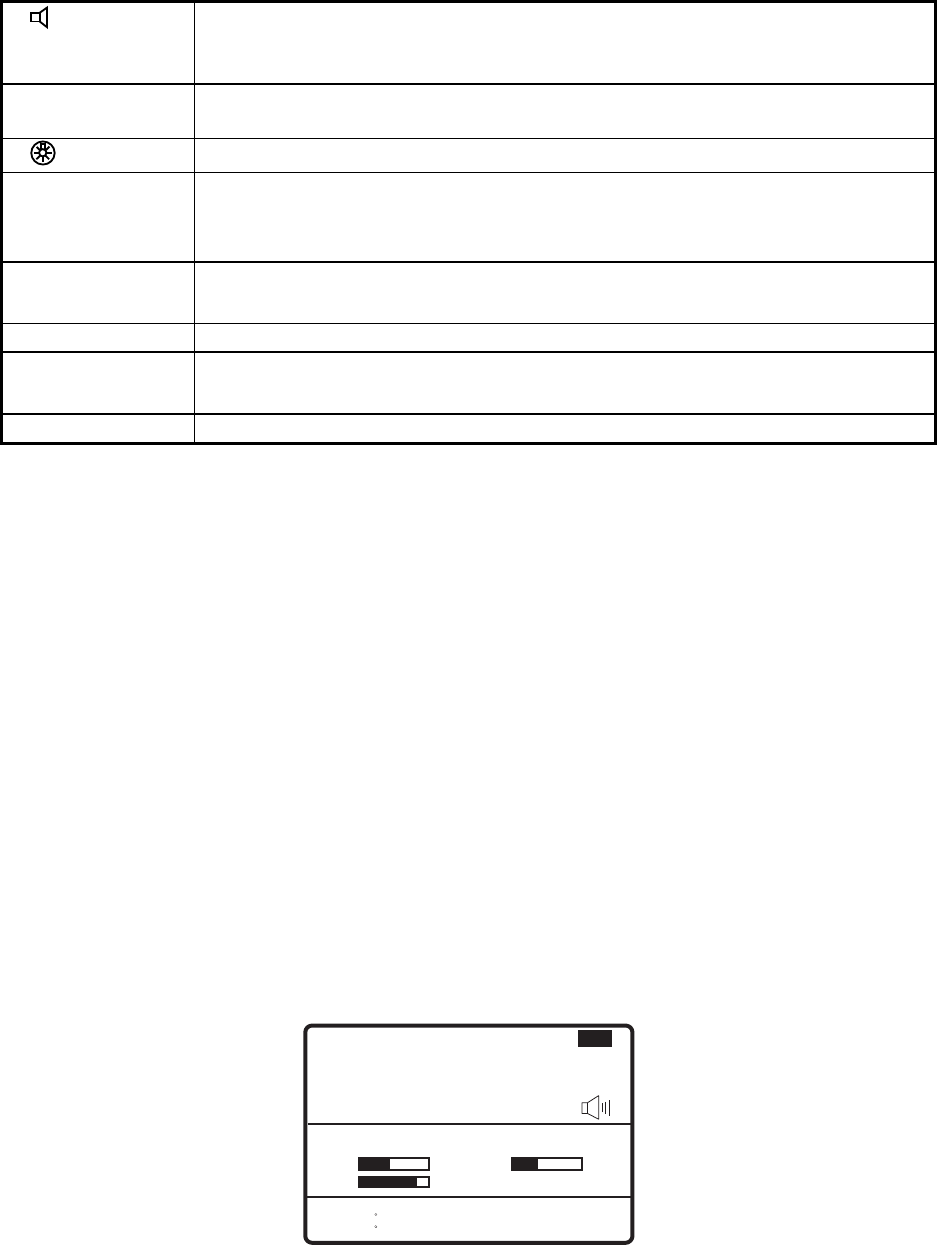
1. OPERATIONAL OVERVIEW
1-2
7/ key
Turns loudspeaker on/off.
(Note that this key does not silence the distress or urgency alarm.)
8/PRINT key Prints communications log files, current screen (except DSC standby
screen and radiotelephone screen) and test results.
9/ key
Adjusts panel dimmer and LCD contrast.
*/FILE/CURSOR
key
• Opens the send message file list from the DSC standby screen, to send
stored message.
• Shifts cursor.
0/LOG/TUNE key
• Long press: Tunes antenna in radiotelephone operation.
• Momentary press: Displays message logs.
#/SETUP key Opens the main menu.
ALARM lamp
• Flashes in red for distress and urgency messages.
• Flashes in green for safety and routine messages.
OVEN lamp Lights (in green) when mains switchboard is on.
1.2 Turning the Power On/Off
Turn the PWR/VOL knob clockwise at the right-hand side of the control unit to power the
system. The RT screen appears.
Rotate the PWR/VOL knob counterclockwise to turn the system off.
In the dual control unit system, the control unit connected to the CONTROLLER 1 port on
the transceiver unit has priority and it controls the power for both the No.1 and No. 2 control
units. The power switch of the No. 2 control unit powers on/off the No. 2 control unit only.
Note: Turn on power at switchboard more than five minutes before turning on this
equipment.
1.3 Radiotelephone (RT) Screen
Turn the power on, or press the 1/ RT/CH key to show the radiotelephone screen. This is
where you set up the transceiver unit, and communicate by voice or telex.
SSB SIMP HIGH FAST NB SQ
SEN
S
IA
10.0A
MMSI xxxxxxxxx
POS 35 00.0000N
135 00.0000E
CH: 200
Tx: 2182.0 kHz
Rx: 2182.00 kHz
UTC 00:00
EPFS 23:59
DR
Radiotelephone (RT) screen


















